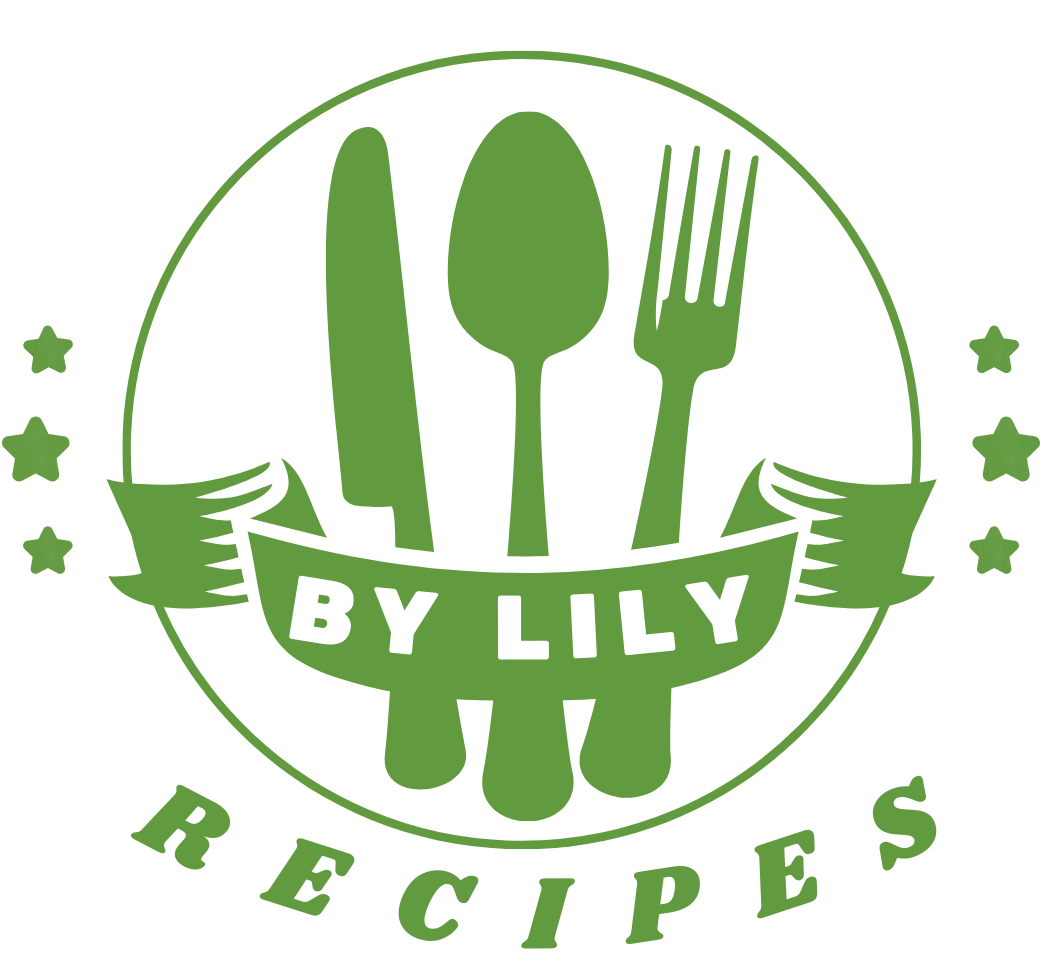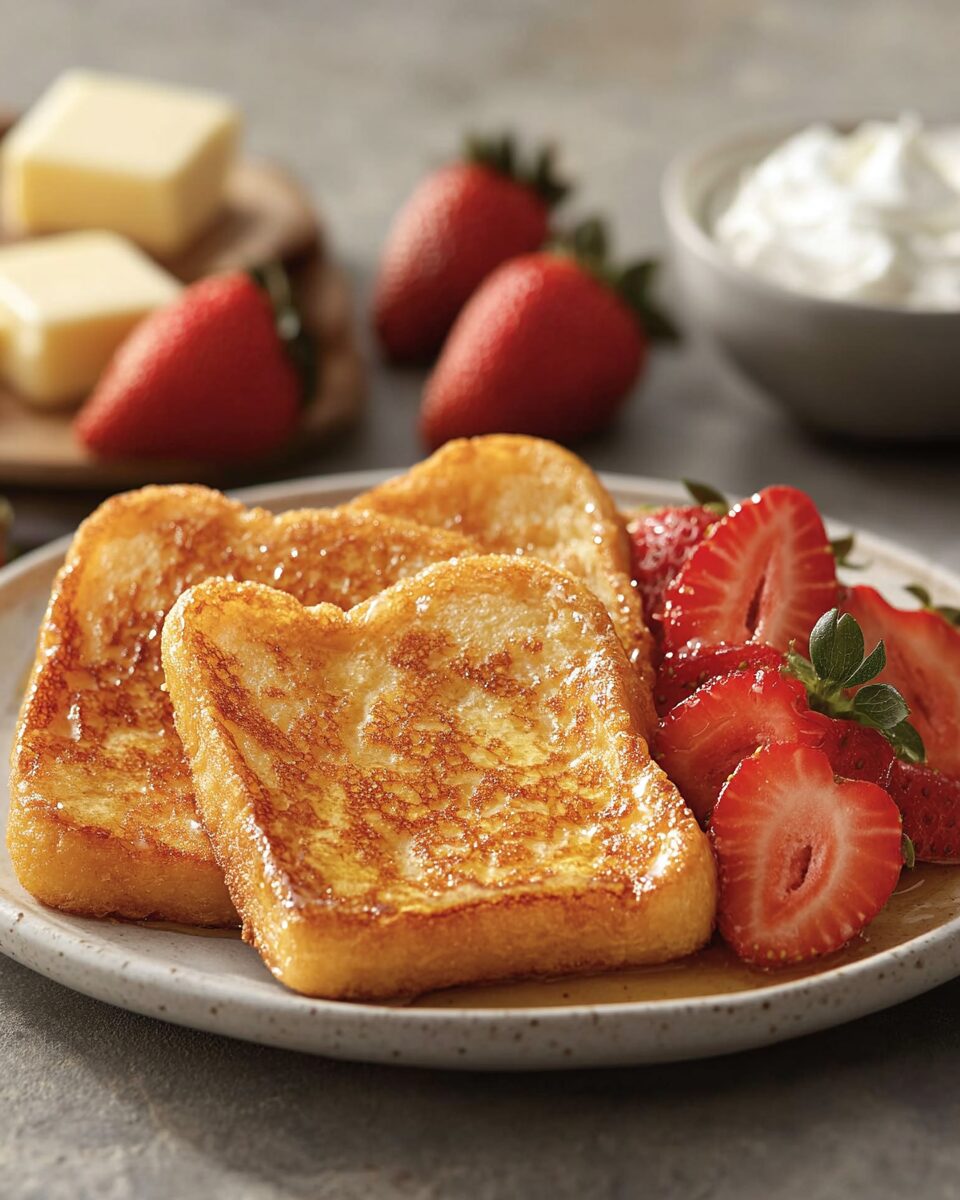French toast is a delicious and classic breakfast option that is both quick and easy to prepare. Whether you’re looking for a special weekend treat or a simple weekday breakfast, this recipe will help you make perfectly golden, fluffy, and flavorful French toast in no time. Pair it with your favorite toppings like maple syrup, fresh fruit, or powdered sugar for an indulgent meal!
Full Recipe:
Ingredients
- 8 slices Brioche bread (or Texas Toast)
- ½ cup milk
- 4 eggs
- 1 tablespoon vanilla extract
- 1 tablespoon sugar
- 1 teaspoon cinnamon
- Butter or cooking oil for frying
Directions
- In a mixing bowl, whisk together the eggs, milk, sugar, vanilla extract, and ground cinnamon until well combined. This will create a flavorful custard mixture for your French toast.
- Heat a non-stick skillet or frying pan over medium-high heat. Add a small amount of butter or cooking oil to coat the bottom of the pan.
- Dip one slice of bread into the egg mixture, making sure to coat both sides evenly. Allow any excess mixture to drip back into the bowl.
- Place the coated bread slice onto the hot skillet. Cook for about 2-3 minutes on each side, or until it turns golden brown and slightly crispy.
- Repeat the dipping and cooking process for the remaining slices of bread, adding more butter or oil to the pan as needed.
- Remove the French toast slices from the skillet and place them on a plate.
- Serve your delicious French toast warm, topped with your favorite toppings such as maple syrup, powdered sugar, fresh fruit, or whipped cream.
Nutrients (Per 2 Slices)
- Calories: 404 kcal
- Carbohydrates: 38g
- Protein: 15g
- Fat: 21g
- Saturated Fat: 11g
- Polyunsaturated Fat: 1g
- Monounsaturated Fat: 2g
- Trans Fat: 0.02g
- Cholesterol: 287mg
- Sodium: 394mg
- Potassium: 113mg
- Fiber: 0.3g
- Sugar: 5g
- Vitamin A: 888 IU
- Vitamin C: 0.02mg
- Calcium: 108mg
- Iron: 2mg
Enjoy your homemade French toast, a simple yet delicious way to start your day! 🍞🥞
The History of French Toast
Despite its name, French toast did not originate in France. The earliest known reference to a dish similar to French toast dates back to Ancient Rome, where people soaked bread in a milk and egg mixture before frying it. This dish, called “Pan Dulcis,” was a way to make stale bread palatable and prevent food waste.
The term “French toast” first appeared in 17th-century England and was later adopted by American settlers. In France, the dish is known as “pain perdu,” which translates to “lost bread.” This refers to the traditional use of stale or leftover bread, which is revived with a custard soak and frying. Regardless of its origin, French toast has evolved into a globally recognized dish with numerous regional variations.
Popular Variations of French Toast
While the classic French toast recipe is timeless, there are numerous ways to customize it to suit different tastes and dietary preferences. Here are a few popular variations:
- Stuffed French Toast: This decadent version involves sandwiching cream cheese, Nutella, peanut butter, or fruit preserves between two slices of bread before soaking and frying.
- Savory French Toast: Instead of the traditional sweet preparation, this version includes ingredients like cheese, herbs, and spices. Toppings can include avocado, smoked salmon, or even bacon.
- Vegan French Toast: By substituting eggs with mashed bananas, flaxseed meal, or chickpea flour, vegans can still enjoy the rich flavors of French toast.
- Gluten-Free French Toast: Using gluten-free bread or alternative flours makes this dish accessible for those with gluten sensitivities.
- Baked French Toast Casserole: This is a convenient, make-ahead option where the soaked bread is layered in a baking dish and baked until golden brown.
Best Breads for French Toast
The type of bread you use significantly affects the texture and flavor of your French toast. Here are some of the best bread options:
- Brioche: A rich, buttery bread that absorbs the custard mixture well while maintaining its soft texture.
- Challah: Similar to brioche, challah is slightly less sweet but has a soft crumb that works perfectly for French toast.
- Texas Toast: A thick-cut white bread that results in a hearty and satisfying dish.
- Sourdough: Adds a tangy depth of flavor to balance the sweetness.
- French Baguette: Creates a firmer and slightly chewy French toast with a crisp exterior.
Serving Suggestions and Toppings
French toast can be enjoyed in numerous ways, depending on your preferences. Some of the most popular toppings include:
- Classic Sweet Toppings: Maple syrup, powdered sugar, honey, whipped cream, or fresh fruit like strawberries, blueberries, and bananas.
- Nutty and Crunchy Toppings: Chopped almonds, pecans, walnuts, or granola add a delightful crunch.
- Chocolate and Dessert-Inspired Toppings: Drizzle your French toast with chocolate sauce, caramel, or a dusting of cocoa powder for a dessert-like experience.
- Savory Combinations: If you prefer a savory touch, try adding cheese, avocado, or smoked salmon with a sprinkle of herbs.
Health Benefits and Nutritional Considerations
French toast is not only delicious but can also be a nutritious meal if prepared with mindful ingredient choices. Here are some health benefits and considerations:
- Protein-Rich: Eggs and milk provide protein, which supports muscle growth and overall health.
- Customizable for Nutritional Needs: By choosing whole-grain bread, using almond or oat milk, and reducing sugar, French toast can be a healthier option.
- Energy Boosting: The carbohydrates in the bread provide sustained energy, making it an excellent breakfast choice.
- Mindful Calories: While French toast can be indulgent, opting for minimal butter, natural sweeteners, and fresh fruits helps maintain a balanced diet.
Pro Tips for Perfect French Toast
To achieve the best results, keep these expert tips in mind:
- Use Stale Bread: Slightly dry bread absorbs the custard mixture better without becoming too soggy.
- Soak the Bread Properly: Allow the bread to sit in the egg mixture for at least 30 seconds on each side for even absorption.
- Use Medium Heat: Cooking on medium heat ensures the inside is cooked without burning the outside.
- Don’t Skimp on Butter: Adding a small amount of butter while frying creates a golden, crispy crust.
- Experiment with Spices: A dash of nutmeg, cardamom, or even a bit of orange zest can elevate the flavors.
- Serve Immediately: French toast tastes best fresh out of the pan, so enjoy it warm with your favorite toppings.
Conclusion
French toast is a timeless, versatile dish that can be customized to suit any palate. Whether you enjoy it sweet, savory, or as a gourmet creation, it is a breakfast staple that brings comfort and indulgence. By experimenting with different bread types, flavors, and toppings, you can make your French toast experience unique every time. So, the next time you’re looking for a simple yet satisfying breakfast, whip up some French toast and start your day on a delicious note!






